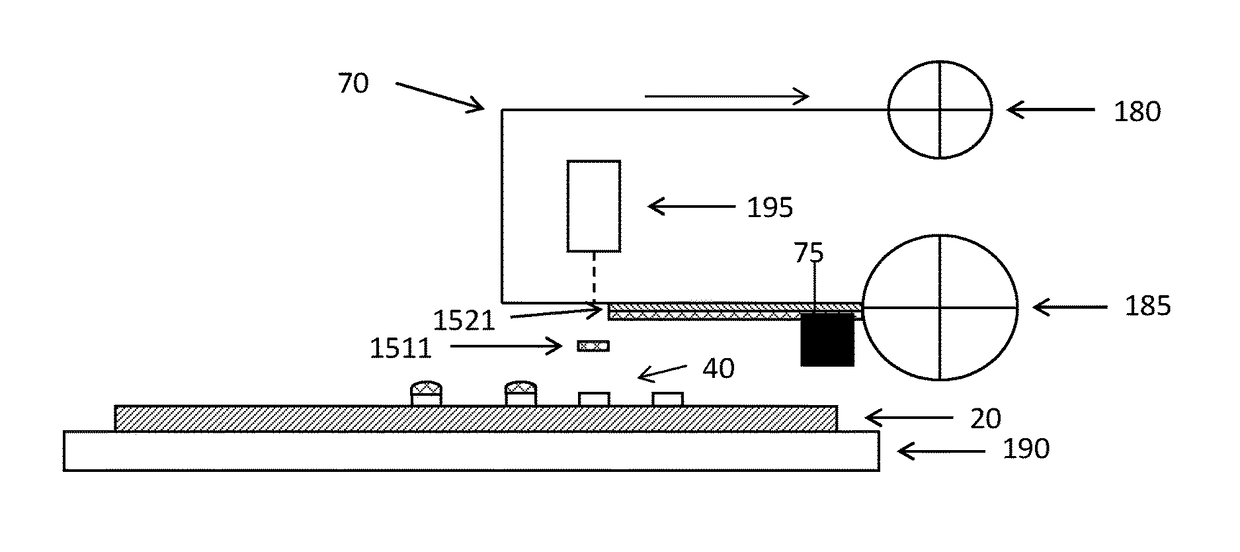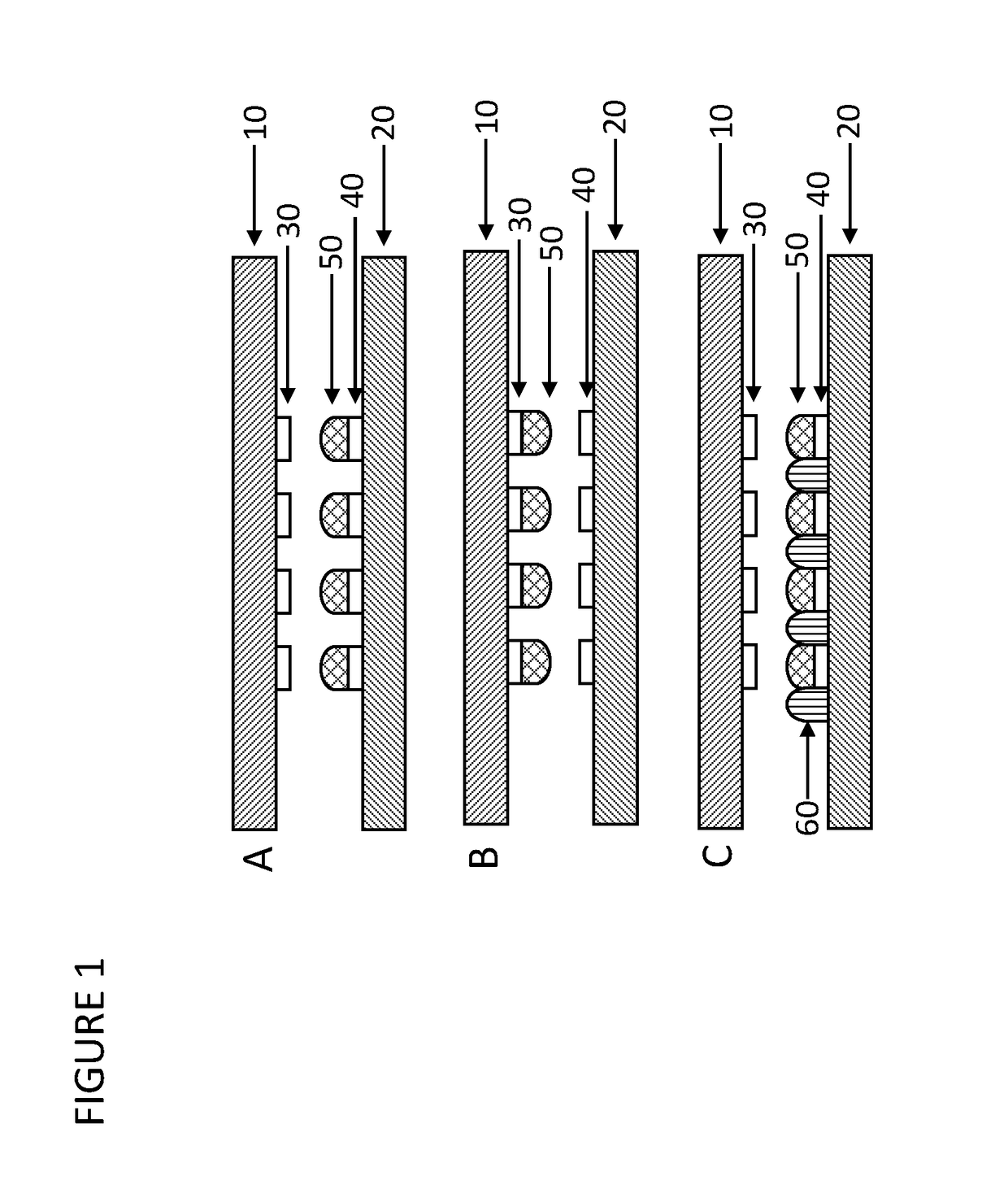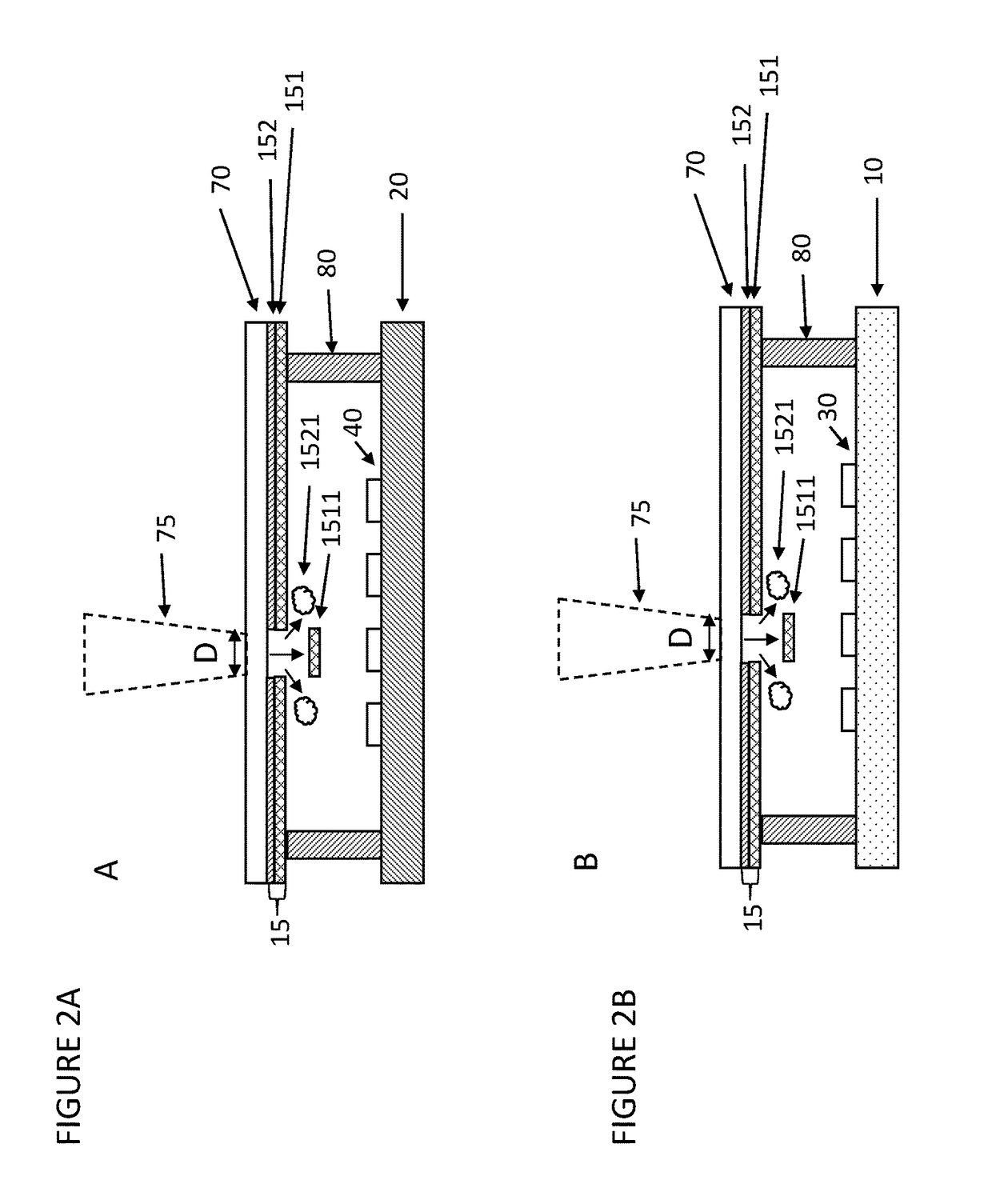Method for bonding bare chip dies
a technology of bare dies and bonding methods, applied in the direction of soldering apparatus, semiconductor/solid-state device details, manufacturing tools, etc., can solve the problems of not having the necessary resolution, prone to dislocation, and suffering from certain intrinsic limitations, so as to prevent the matter of bonding
- Summary
- Abstract
- Description
- Claims
- Application Information
AI Technical Summary
Benefits of technology
Problems solved by technology
Method used
Image
Examples
Embodiment Construction
[0022]In an aspect, a direct write method is provided for high speed positioning die bonding material for discrete chip components on substrates, which can be operated in a reel to reel manufacturing fashion. In particular, the method can be used for high resolution deposition of highly viscous materials. With the attainable resolution of the disclosed methods and systems, that a resolution spot size of transferred die bonding material may be attained with a spot diameter of the transferred bonding material that is smaller than 50 micron.
[0023]FIG. 1 illustrates schematically several embodiments (A,B,C) of methods for bonding discrete pads 30 of a bare die chip components (chips) 10 on a pad structure 40 of flexible substrate 20. As illustrated further below, the method has sufficient accuracy to correct for web deformations of the flexible substrate 20. The term “flexible substrate” used in this text refers in particular to a substrate that is bendable enough to be used in a reel t...
PUM
| Property | Measurement | Unit |
|---|---|---|
| operating temperature | aaaaa | aaaaa |
| distance | aaaaa | aaaaa |
| thickness | aaaaa | aaaaa |
Abstract
Description
Claims
Application Information
 Login to View More
Login to View More - R&D
- Intellectual Property
- Life Sciences
- Materials
- Tech Scout
- Unparalleled Data Quality
- Higher Quality Content
- 60% Fewer Hallucinations
Browse by: Latest US Patents, China's latest patents, Technical Efficacy Thesaurus, Application Domain, Technology Topic, Popular Technical Reports.
© 2025 PatSnap. All rights reserved.Legal|Privacy policy|Modern Slavery Act Transparency Statement|Sitemap|About US| Contact US: help@patsnap.com



